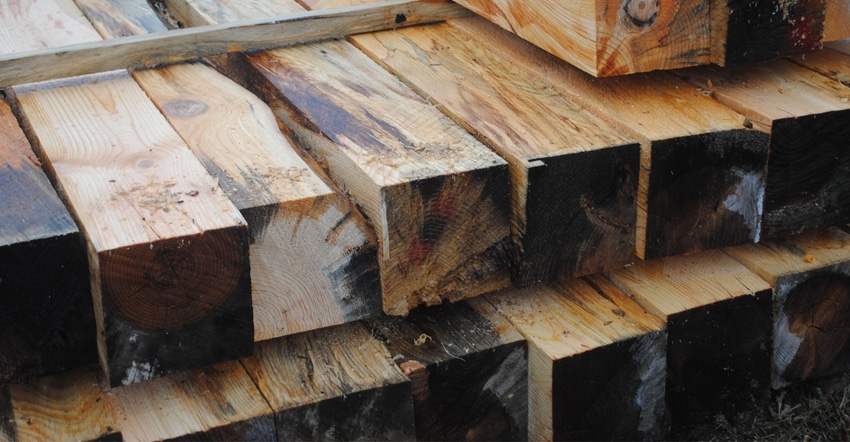November 5, 2018

With millions of ash trees nationwide falling victim to emerald ash borer, as well as other valuable tree species succumbing yearly to other insect infestations, it is important for farmers and landowners to understand how to best utilize these logs.
Low-quality logs can always be used on the farm where they are located for firewood or landscape mulch. However, transportation of EAB-infested logs and products carries stringent restrictions.
“As ash is infested by EAB, the larvae damage the outer wood and just under the bark,” explains Brian Brashaw, U.S. Forest Service manager for the Forest Products Marketing Program based in Madison, Wis. “It often leaves tracking and other deterioration. Over time, the tree is affected enough to cause decline, often including bark falling off and, eventually, death.” This process of decline takes a few years to progress, so trees can be removed as they show decline.
“After death, the trees are probably still fine to use for a year or so, depending on the application and if they don’t show major discoloration, checking or other deteriorations,” Brashaw says. “If the lumber or logs are to be used for decorative furniture, cabinetry or other products where high-quality visual appearance is preferred, time is of the essence.”
For low-quality use like pallets, biomass or chipping, time isn’t as much of an issue.
Ash wood, like that of so many tree species, is suited for many applications. It works well for lumber and veneer for furniture, millwork, and flooring. The lumber can be used for pallets and crating, and lower-quality logs can go into biomass chips for energy or pellets.
EAB-infested logs and other insect-infested wood carry transport limitations. “Understand the local and state rules for invasive species,” Brashaw says. “Logs and lumber in many states are under quarantine, meaning they can’t be transported outside of the quarantine zone without approval and permits.”
The rules for transport are different depending on the state, or USDA Animal and Plant Health Inspection Service regulations for the region.
“Often, a transport agreement could be set up with the state to move the logs in the dormant, or winter, season, with an agreement specifying how everything is to be used or destroyed by the following spring. There are firewood heat treating approaches that allow for transportation as well,” he adds. “In urban or farm settings, landowners should be mindful of any potential metal contamination like fencing, nails or barbed wire.”
The key to getting the most out of insect-infested lumber is to use it right away. “Try to keep the lumber out of direct sunlight because cut ends will check rapidly,” Brashaw says. “Consider painting the cut ends with an end sealer to minimize checking and cracking.”
Several resources are available for using insect-infested or EAB-damaged forest products. Contact Adam Smith, Forest Products Utilization Program leader for the Nebraska Forest Service, at 402-472-1276, or go to Emerald Ash Borer Information Network.
You May Also Like




